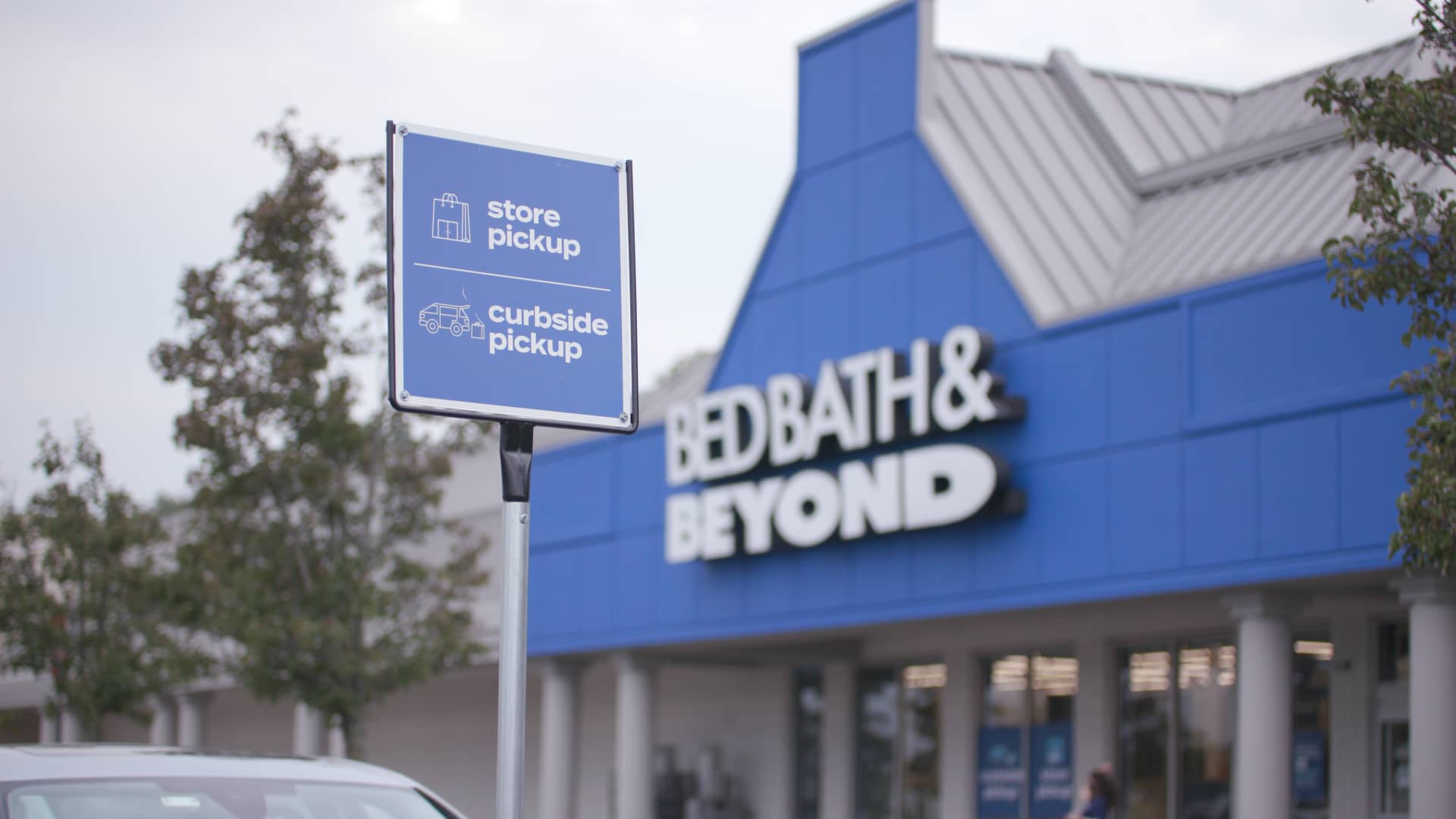Bed Bath & Beyond shares plummeted Thursday, after the retailer reported a quarterly sales decline of 5% from a year ago, which it said was largely due to the sale of non-core assets like Cost Plus World Market and ongoing store closures that are part of its bigger turnaround plans.
The stock was down more than 11% in premarket trading.
Same-store sales for its entire business, which includes Buy Buy Baby and Harmon Face Values, rose 2%, climbing for the second consecutive quarter. Digital sales soared 77% from a year ago, fueled by online growth of 94% at Bed Bath’s namesake banner.
Many Americans have been staying at home during the Covid pandemic, prompting them to do more cooking, cleaning, organizing and redecorating. Sales of home organization, kitchen food prep, bedding, bath and indoor decor represented two-thirds of Bed Bath’s total sales during the quarter, the company said.
Here’s how Bed Bath & Beyond did during its third quarter ended Nov. 28, compared with what analysts were expecting, based on Refinitiv data:
- Adjusted earnings per share: 8 cents vs. 19 cents, expected
- Revenue: $2.62 billion vs. $2.75 billion, expected
For the three-month period ended Nov. 28, Bed Bath reported a net loss of $75.44 million, or 61 cents per share, compared with a loss of $38.55 million, or 31 cents a share, a year earlier.
Excluding $86 million in one-time charges tied to losses on asset sales, restructuring and impairment charges, the company earned 8 cents a share. That was below the 19 cents per share that analysts were expecting.
Net sales fell 5% to $2.62 billion from $2.76 billion a year ago. That also came in below the $2.75 billion forecast by analysts.
Same-store sales, which track sales online and at Bed Bath stores open for at least 12 months, were up 2%, boosted by online demand from shoppers. Bed Bath said it gained 2.2 million new digital customers during the quarter, with 36% of its digital sales fulfilled by stores. Sixteen percent of e-commerce purchases were picked up by customers in stores, it said.
“Once the election kicked in and and Covid started ramping up, customers had built the muscle and built the understanding of those [pick up] services, and quickly pivoted into them,” Chief Executive Mark Tritton told CNBC in a phone interview. “Week by week this holiday season, we saw those rates increasing exponentially.”
As the big-box retailer works through hundreds of store closures, however, it’s likely going to take more time for Bed Bath’s turnaround plans to translate into sustainable growth — growth that lasts beyond the boost it has experienced during the pandemic. In July, the company said it was aiming to shut roughly 200 locations — many of those Bed Bath stores — by 2022. It’s currently in the process of closing more than 40 stores this year.
Bed Bath announced Thursday it’s calling for same-store sales during its fiscal fourth quarter to be about in line with the prior-year period. Net sales are estimated to be lower by a double-digit percentage, due in part to ongoing closures, the company said. Analysts had been calling for a 6% drop in sales, according to Refinitiv.
Bed Bath laid out longer-term financial targets in October calling for same-store sales to be “stable” in fiscal 2021, and rising in the low-to-mid single digits by 2023. That outlook remains unchanged.
During the Covid crisis, the company also said it has been prioritizing merchandising and marketing to consumers investments in their homes. Its efforts appear to be paying off. During the quarter, it said it gained market share in the bed category, with improving trends in bath and kitchen, citing data from the NPD Group.
“We have a very different organization today than we did in 2019 and prior,” Tritton said.
“If you think about 2020, not only did we weather the [Covid] storm and keep our customers and our teams safe, we reconstructed the strategy to return to growth. We also sold five companies,” he said. “Now we can really double down on the continuing evolution of our Bed Bath & Beyond recovery.”
Starting this year, Bed Bath is launching more than 10 private-label brands, with the hope that these new options will help set it apart from rivals like Walmart, Target and Amazon, which have all had strong performance during the pandemic.
On Thursday, Bed Bath said it “feels confident in continuing to deal with the Covid-related headwinds resulting from lower store traffic and increases in shipping costs.”
Its outlook assumes its stores won’t be required to close due to government restrictions brought on by the health crisis.
Bed Bath & Beyond shares are up about 27% over the past 12 months, as of Wednesday’s close. The company has a market cap of $2.6 billion.
Find the full earnings press release here.
